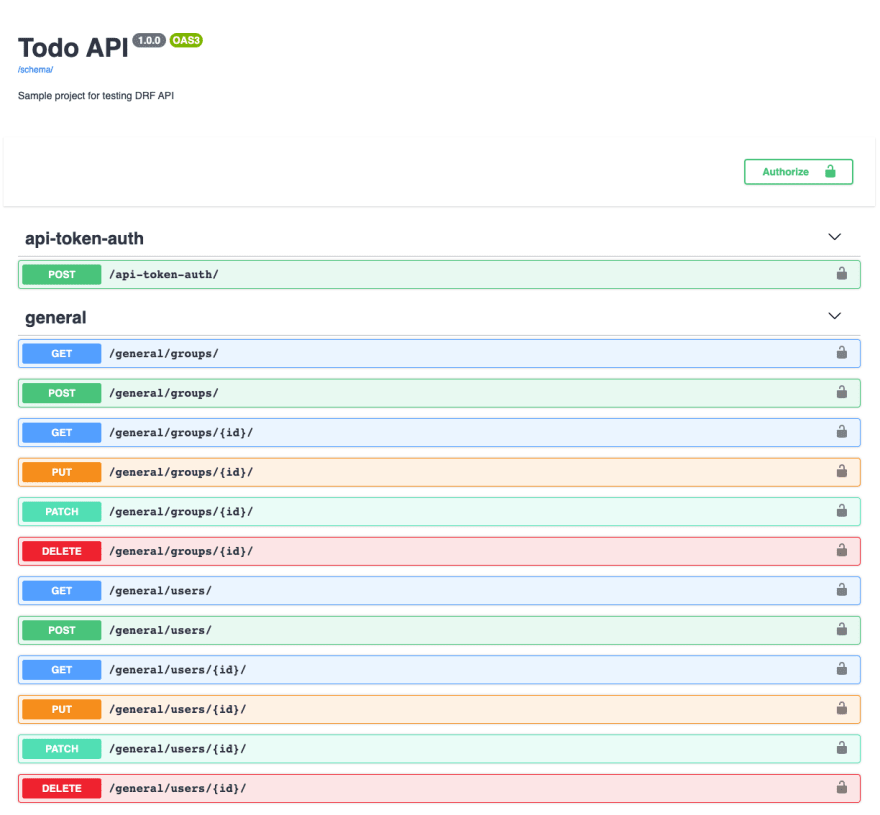

- #How to use swagger editor with django install#
- #How to use swagger editor with django update#
- #How to use swagger editor with django code#
- #How to use swagger editor with django trial#
#How to use swagger editor with django update#
Let us create a migration file now to update the database with the new model. Last_name = models.CharField(max_length=255) # api/models.pyįirst_name = models.CharField(max_length=255)
#How to use swagger editor with django code#
Let us include the following code in the models.py file of the apiapp. We need to create our model and serialize it. Now, we will add the rest_framework and api app to the list of INSTALLED_APP in the settings.py file in the project directory, the schoolService folder. Then, we’d go to to create an app to host our APIs django-admin startapp api Let’s change directory into the new project directory cd schoolService Now, we shall create our Django project django-admin startproject schoolService
#How to use swagger editor with django install#
Now, as we have activated our virtual environment, let’s proceed to install necessary packages and software including the Django package, and the django-rest-framework, the package that allows us to use the Django REST framework. Should we need to deactivate the virtual environment, we shall simply use the deactivate command, deactivate. We shall activate the virtual environment as follows source env/bin/activate We shall name the new virtual environment env. Let us create a virtual environment with virtualenv to isolate our project from any other project on our computer.
let’s call the directory school-api mkdir school-api & cd school-api We shall start by creating a directory (folder) for our project and navigate into the new directory. Let us start the project we are going to document by creating installing Django and setting up an app.

In this article, we shall go over creating an API for managing student records in a school and document the API we create. Swagger UI allows us to build our documentation in the form of HTML pages so it can be viewed and read with ease. Django REST framework provides the capability to build RESTful (Representational State Transfer) kind of APIs with the Django framework. Hence the need to provide a means of communicating API functionalities in a precise and clear manner to other developers. A lot of times, the developer or team who utilizes an API is different from the developer or team who built it. APIs allow developers to separate concerns in software either as functional components or a service-oriented manner.ĭjango is a Python framework that allows for building web applications in a fast and efficient way. Web APIs are the type of APIs used on the internet.

#How to use swagger editor with django trial#
Launch your free trial today.An Application Programming Interface (API) is a method by which two computers are can communicate with each other. To experience Swagger in action, check out Cloudways Laravel Hosting. This may be a caching issue, so make sure to hard-reload the page so that a fresh copy of your specification file is fetched. But there is a caveat (as per our experience), that some minor feature may break in a certain build.Ī few times you may experience that recent changes in your specification file are not reflecting in UI. Swagger UI is a very active project and it’s highly recommended to keep updating your build of it. Also the specification can be broken in multiple files as we use few definitions defined in a separate files (params.yaml and responses.yaml).įinal output would look like this. Here is a sample of the YAML file swagger: '2.0'ĭescription: Move your app forward with the Cloudways APIĭescription: "API Authentication related calls"Īs you can see, we can re-use parts of the specification using the $ref property. Swagger Editor ( a context aware Swagger specification editor) can certainly help you in the process but you can also use the text editor of your choice. Swagger specification consists of a YAML or JSON file. After that, just open “./dist/index.html” in your browser. You can easily install Swagger UI by either downloading or cloning the repo. Anyway, we found Swagger UI and Swagger Specification very user-friendly and went on to write the specification manually for our API. These days, Laravel and Lumen are becoming the most widely used frameworks for creating PHP based web apps and APIs, and we were expecting some out of the box support for these in swagger but couldn’t find any. Swagger is a language/framework agnostic ecosystem to produce and visualize RESTful APIs. For this purpose, we evaluated different frameworks and finally went for Swagger. Recently at Cloudways, we started to create an API for Cloudways Platform and we wanted to give our customers the most convenient tool to explore our API. Google’s OAuth 2.0 Playground is a good example of it. Things can get more awesome if the interactive tool can be used as a playground to test your API. Follow writing an API, it’s always a good idea to give the API users an interactive visualization of your complete API.


 0 kommentar(er)
0 kommentar(er)
